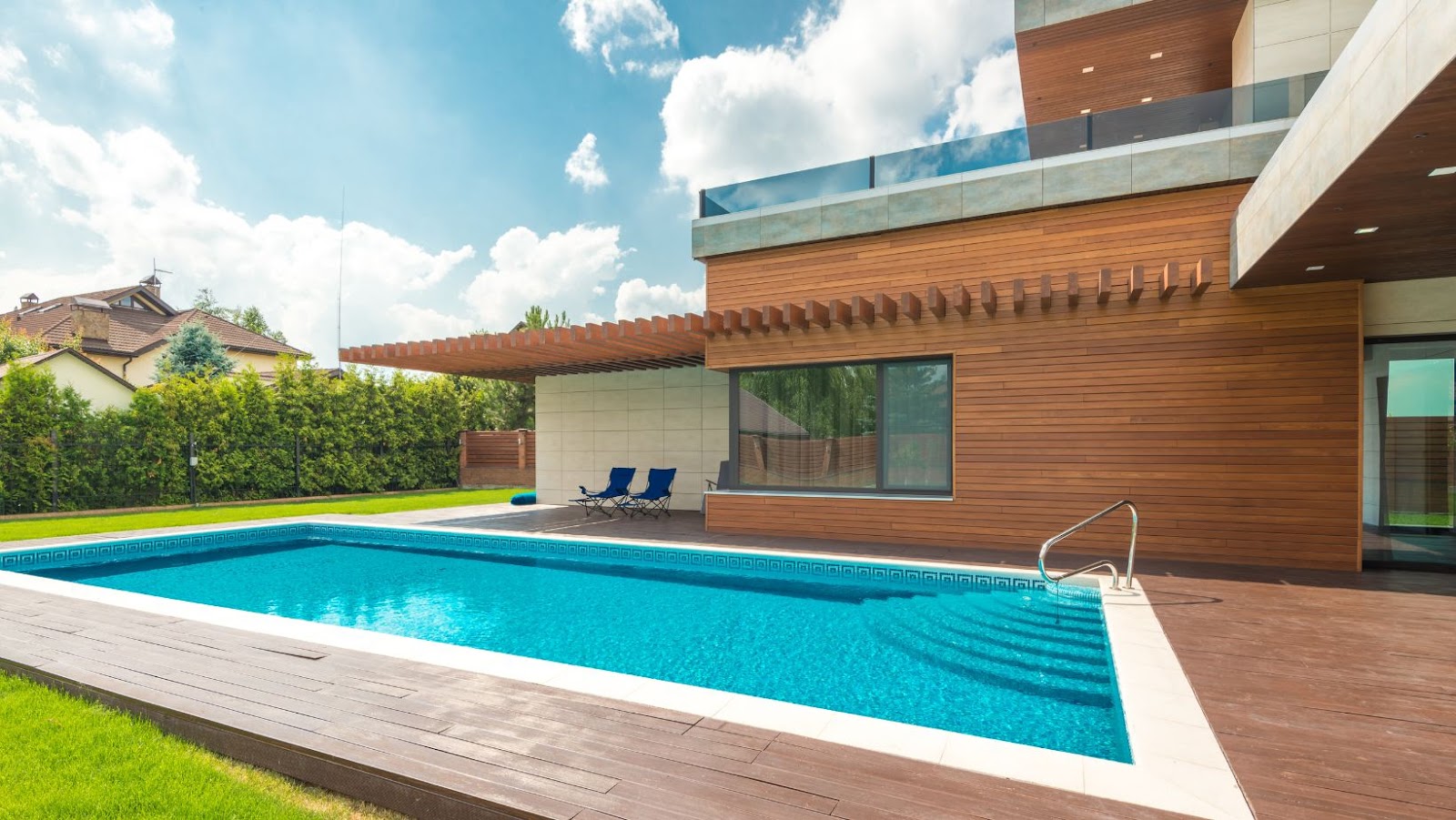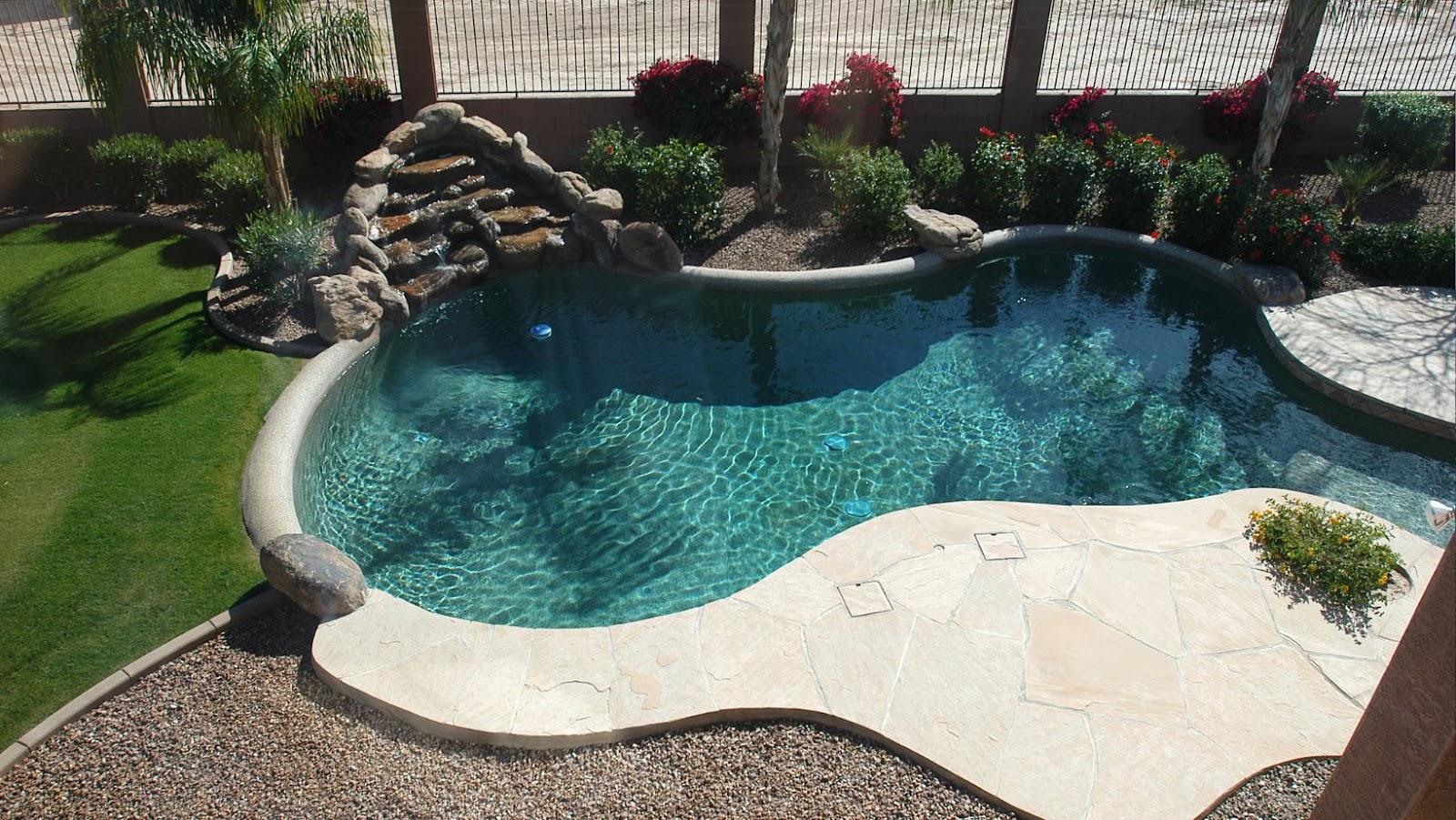
Creating a level backyard for your pool is one of the most important steps when it comes to installing a pool. When your backyard is properly leveled, it helps ensure that the pool is installed correctly and that it is safe for use. Installing a pool without first leveling the backyard can lead to a variety of issues, such as improper circulation of water and an uneven pool surface.
In this article, we will discuss why it is important to level your backyard when installing a pool and how you can do it:
Benefits of having a level backyard for your pool
Having a leveled backyard is incredibly vital to the success of your swimming pool installation. A leveled backyard will help prevent shifting and cracking of both your pool foundation and the surrounding area due to water pressure, drastically reducing the chances of costly future repairs, and help ensure that your pool is stable and safe for years to come.
Besides safety, there are several aesthetic benefits from having a level yard for your next pool installation. Properly leveling your backyard can eliminate dips in which standing water collects, preventing further damage to the area around it such as root erosion or standing water issues. In addition, a level and even surface provides an aesthetically-pleasing look for you and guests. Having a level yard also means less maintenance when cleaning and keeping the pool area clean in general.
Finally, no matter what type of surface you choose to finish off with (grass, rocks, concrete) having a level layer before adding more material allows you to create beautiful outdoor living spaces that are difficult or impossible if you are not starting with a leveled area. If there are changes in elevation in various areas of your backyard, then having significant differences between two points may mean that some parts of the yard can become inaccessible or unusable while having safety hazards preventing them from being used by family members or guests.
Leveling the never requires significant labor costs upfront when building pools – but it’s sure to avoid bigger issues down the road if done properly -making properly leveling essential for anyone looking at building or installing a new swimming pool on their property.
How to level backyard for pool
A pool in an uneven backyard can be a nightmare. Having a level base for your pool is essential for the longevity of your swimming pool. This is even more important if you’re planning on having an in-ground pool. Fortunately, there are some simple steps you can take to ensure that your backyard is leveled for your pool:
- Step 1
- Step 2
- Step 3
- Step 4
- Step 5
Measure the area
Before undertaking any landscaping project, it is important to have accurate measurements of the area. Measure the length and width of the area you are leveling for the pool, making sure to account for the obstructions if any that may be in your way. This will give you an approximate measurement of how much dirt, fill or other material you need for your project.
Don’t forget to measure from any obstructions that may be in the way and make sure all measurements are taken from wall-to-wall. Once completed, mark off these measurements on your yard with chalk so you can accurately assess how much space you will need for leveling.
Remove any obstacles
Before you can begin your project of leveling a backyard for a pool, it is important to first remove any obstacles that may be present. This includes removing any stones, debris, stumps, roots, or large rocks. If there are any permanent structures such as sheds or trees in the area, these need to be cleared away as well. It is also important to clear away all vegetation from the area you want to level in order to prevent inadvertent damage.
Once all of these obstacles have been removed from the area, you will be ready to begin the process of actually leveling your backyard for a pool.
Dig out the area
Creating a level backyard for a pool requires careful planning and work. The first step when leveling your backyard is to dig out the area where the pool will be located. Start by marking out the shape, size, and depth of the pool with chalk. At this stage it is best to proceed cautiously, as mistakes can be costly in both time and money.
Next, use stakes and string to outline the area where you will dig. Using a shovel or power equipment such as a backhoe, begin to dig out the shape of your future swimming pool. As you dig deeper into the ground, use some type of reference line or tool such as a builder’s level to check for uneven areas in order to ensure that your pool will fit exactly within its allotted boundaries without being lopsided when filled with water.
Depending on your local building regulations and terrain type, you may also need to excavate more deeply in certain areas so that plumbing pipes or other ground equipment can be installed properly for your desirable setup. As you are digging deeper look for any tree roots that could interfere with proper installation of such equipment or disrupt the structural integrity of frame components used in an above-ground pool setup system.
Once these are removed carefully maintain an even grade across going from shallowest point at one end gradually up towards deeper section on other end – while making sure entire bottom of pool is flat with no dips or slopes – before lining up liner as bottom layer with hole cut into exact center point as add outdoor accessories like solar lighting markers signs etc.
Fill in the area
One of the most important steps in preparing your backyard to install a pool is to fill in the area. This means that you need to bring the ground surface down to the desired level, which is usually 4 inches below the finished grade. You can fill in this area with dirt or soil, but you should consult with your pool service provider before deciding on what material to use.
Once you have determined the best type of material for filling in and leveling your backyard, you will need to determine how much you will need. Start by taking measurements of the area that needs to be filled and leveled, making sure that all sides are even. Then calculate how much of each item is needed – dirt/soil, sand and gravel.
Once you have all the necessary materials ready, it’s time for excavation work and filling the backyard with material – starting from one end towards another and going east towards west very slowly until you reach the desired level and uniformed grade throughout.
When assessing which kind of material would be best for filling your backyard keep in mind that soil or dirt are suitable for small areas but can become difficult when dealing with larger ones as they might not evenly distribute nor settle naturally as well as other options – like sand, pea gravel or concrete screenings just to name a few; ensuring a proper leveled surface much easier compared others materials mentioned before during this part of backfilling process.
If you are working on larger areas than 1 acres consider hiring a professional grading specialist or consulting an engineer who specializes in backyard leveling when determining what type and amount of fill required.
Level the area
In order to create a level surface for your pool, you first need to begin by assessing the existing slope of the ground and the surrounding terrain. If the area is sloped, you’ll need to use soil and sand to raise or lower the ground until it is level. Carefully measure slopes before and after each leveling session. You should also use a laser level to ensure accuracy in preparation for building your pool.
The exact steps needed to level a backyard will depend upon whether there are hills, valleys or dips present on the terrain. Below are some helpful tips that can be used when leveling your backyard for a swimming pool:
- Remove any vegetation and debris from the site, as well as any rocks or other obstacles that could get in the way of optimal leveling operations.
- Measure out a rectangular area using stakes, string and spray paint. The measurements should go beyond all edges of what will eventually become your pool space so that you have enough room left over to level the perimeter properly.
- If there are dips present in your backyard terrain, fill them with soil and gravel before attempting to further flatten out an already flat space – this will reduce manual labor later on when working around those dips.
- Subtract any dirt from high points in order for lower areas that need raising; add dirt or sand where necessary until all areas within the rectangle have been made even with one another (repeat processes as many times as needed). Lastly, tamp down all newly filled-in areas until they are firmly compressed and no longer settling – if possible, use heavier machinery such as a backhoe or compactor instead of hand tamping! Doing so will make sure the soil is tight enough to fully support weighty features like your future swimming pool!
Conclusion
It’s clear that having a level backyard is essential if you’re looking to build a pool. It’s a necessary step as it helps to ensure the structural integrity and longevity of your pool.
It’s important to take the necessary steps to adequately level the backyard in order to ensure that the pool itself is completely level, and that the surrounding area is also even. The right process can help to reduce the costs of repairing or replacing the pool down the line.
Summary of the importance of having a level backyard for your pool
Having a level backyard for your pool is essential for numerous reasons. Firstly, an uneven terrain underneath and around the pool can cause the pool to move and shift over time. This can lead to problems such as cracking and disruption of plumbing lines or other components. Additionally, any feature or materials used for safety, such as ladder steps, handrails and fencing will not be able to function properly in an uneven terrain, creating hazardous conditions. Better structural integrity and aesthetics may also be obtained by ensuring a level surface before installation.
To ensure your backyard is level when installing a pool, you should enlist the help of professionals who specialize in grading land to lay out the ground correctly before installation begins. Doing this process without specialist help may result in potential mistakes that could damage your property and wallet down the line. The more level your backyard is when laying down your pool foundation, the better you’ll enjoy its use!







